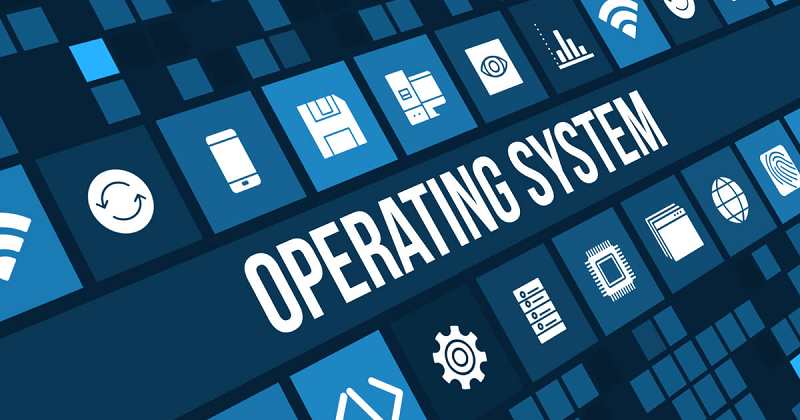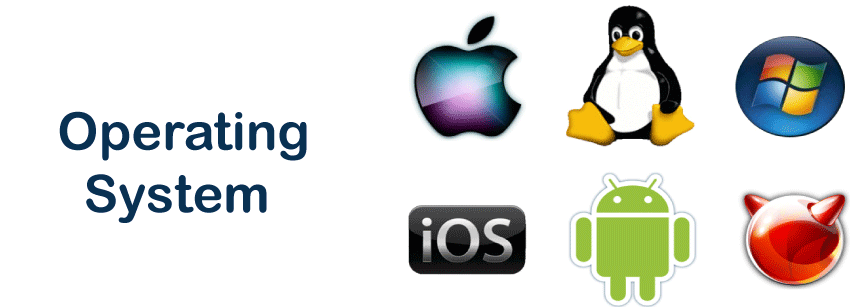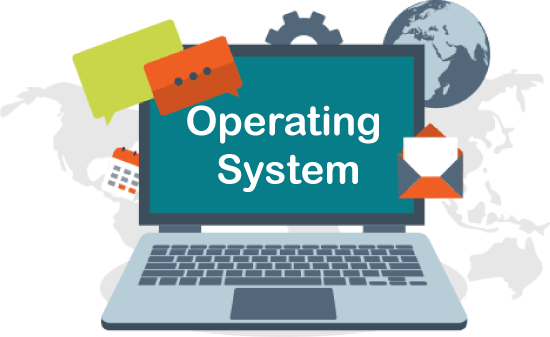Advantages and Disadvantages of the Operating SystemOperating SystemIn 1977 Apple Dos was launched in the market and was a grand success. It is system software that manages software resources and computer hardware and gives common service to computer programs. Some open-source software Operating Systems are FreeBSD, Ubuntu, Fedora Linux, Android, etc., and the paid is Microsoft Windows OS. Microsoft came into the picture in 1981 when it launched MS-DOS in 1981. 
Working of Operating SystemThe computer begins to work on you turn on the power button of your PC. When the power is on, the OS is the first program that activates. It turns the computer language into a human-interpreted language. If the operating System is not installed in the operating System, it would not be easy to use a single program on the computer in the machine. One of the roles of the OS is to organize and control hardware so that the device behaves in flexible and predictable ways. Background of Operating System (OS)
Market Share of Different Operating Systems
OS and Their Shares
Types of Operating SystemsOperating Systems is one such software that has been regularly updated over time. Different companies have endeavored to give the best OS product to the consumer to maintain the level of competition. 1. Multi-Programming Operating System It is also referred to as Multi-tasking OS. It has been divided into two parts: Pre-emptive and cooperative. In pre-emptive, the OS divides the CPU time and devotes a slot to each of the assigned programs. It is very much familiar to multi-threading Cooperative is attained by depending on each process to give time to other processes in a defined manner. It is quite familiar to block multi-threading. The simple reason for the multiprogramming system is to improve resource utilization, which is attained through organizing the computing jobs so that the CPU always has a job to execute at any time. 2. Real-time Operating System The real purpose is to execute real-time applications. It offers maximum time for each of the critical operations it performs. As a result, it ensures that the events will be processed in a specified time. The Operating System uses a special scheduling algorithm, ensuring that it switches work according to its priorities to be completed on the deadlines. Realtime OS Windows include Symbian, OS-9, and Windows CE. Common real-time applications include industrial control systems, control machinery, weapons control system, and air traffic control system. 3. Distributed Operating System This OS handles a group of independent machines, enabling them to appear as a single computer. They apply powerful micro-processors that take advantage of the advancement in networking. Distributed Operating systems also ensure a lighter load on the host machine, even when performing heavy programming. A group of computers together in cooperation form a distributed system. Functions of the Operating System
Features of the Operating System
Advantages of Operating System1. Computing SourceOS is the point of communication or acts as an interface between the user and the computer's hardware. Effective communication of the user with the computer systems helps in improving the performance of any tasks, and it involves three stages:
Complex tasks can also be performed easily if the user communicates effectively with the System. 2. User-Friendly InterfaceOne of the advantages of the Operating System is that it has a user-friendly user interface. Before the coming of the Graphical User Interface (GUI), the Command Line Interface (CLI) was not comfortable to use. The user had to have proper information regarding the commands. The arrival of Windows OS made the Graphical User interface more user-friendly as it contained different graphical representations, icons, symbols, and buttons. These features of the OS helped the user to know the different components of the computer. It came with an abstraction in which users were not exposed to irrelevant complex programs. It came with more user-friendly features like a drag, copy and paste. Everyone could easily understand the features. 3. Resource SharingThe OS supports endorsed resource sharing, and data can be shared seamlessly with several devices and multiple users. The systems made sharing of data and information more flexible. It could be accessed from the remote computer system when these resources (hardware devices, information, and data) are available on the server. Resources can be transferred with the help of external devices like fax machines, modems, and printers. Information can also be shared with several users with the help of email when the System has integrated email service, the efficiency, quality, and performance improvements. 4. No Coding LinesAs discussed earlier, the rise of GUI (graphical user interface) has eliminated the process of writing complex commands for doing small tasks. 5. Data ProtectionMuch data is generated and stored in the data system, which is accessible through the Operating System. Along with its data storage and smooth accessibility, it also offers strong security features to handle your data smoothly. It does not require external software to secure data; the OS uses an authentication process to recognize whether or not the user running a program is permitted to execute it. The process of user authentication can be initiated in the following ways:
The OTP process also adds an extra layer of security. 6. Software UpdateNumerous applications and software are present, issuing regular updates to fix bugs and launching new features. In the same way, OS issues updates at regular intervals, fix bugs and introduce new features. 7. MultitaskingOne of the likable features of the OS is its ability to execute multiple tasks at a time, which the user admires. Users do not have to wait for one task to finish so that they can initiate another. Disadvantages of the Operating System1. System FailureOS is considered to be the heart of the computer system. Without the presence of the Operating System, computers will not operate. With the crash OS, no functions, tasks, and commands will be executed, and there are high chances of your data being completely lost. Several reasons are provided for the system failure, and they are:
2. ExpensiveThe Operating comes with a heavy price and is comparatively expensive compared with other OS like Linux. However, an open source-based OS is available, but it is user-friendly compared to Window OS. 3. Virus ThreatsOS remains vulnerable to external threats as the user might unknowingly download a malicious file. The virus will harm the computer system or slow down the computer. 4. ReliabilityOS is perfectly fine when it is working seamlessly, but any issues or failures in the System, the question of reliability is raised. Failure in the OS makes it incapable of performing any task, bringing the computer system to a rest position. |
 For Videos Join Our Youtube Channel: Join Now
For Videos Join Our Youtube Channel: Join Now
Feedback
- Send your Feedback to [email protected]
Help Others, Please Share









